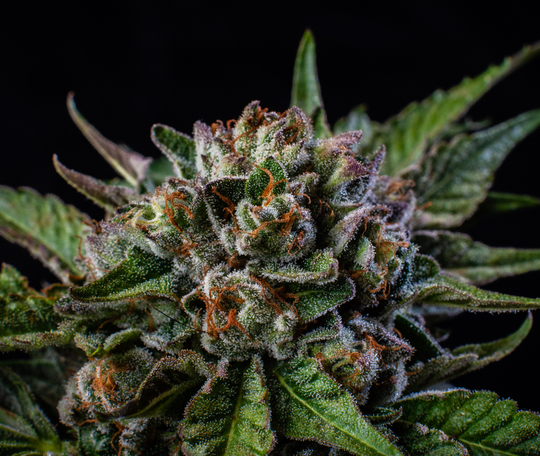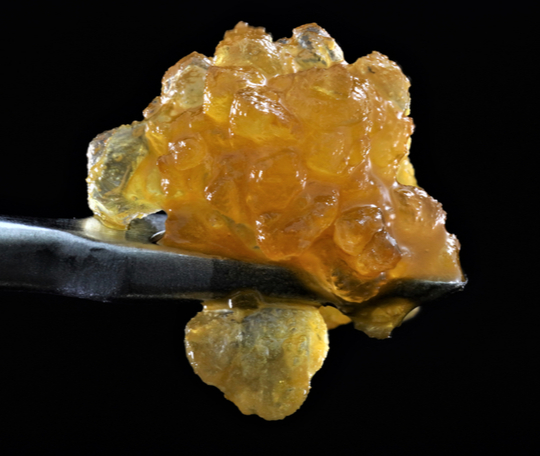PHARMACOLOGY PROFILES
Cannabis
Tetrahydrocannabinol (Delta-9-THC) and Cannabidiol (CBD)
C21H30O2
Drug Classification
Phytocannabinoids
Common Names
Marijuana, Weed, Pot, Mary Jane, Grass, Herb, Bud, Tree,
Dope, Flower, Oil, Hash, Dabs
Binomial Nomenclature
Cannabis sativa L., Cannabis indica, C. ruderalis (hemp)

cannabis indica

cannabis sativa

cannabis rhuderalis
Overview
Cannabis, the only known source of THC and CBD, is a flowering plant native to Asia and the Indian
subcontinent. It has been used in textiles, medicine, and spirituality for thousands of years. Though it
has been illegal in most countries since the 20th century, decriminalization and legalization in the
United States and elsewhere has substantially changed the stigma that surrounds it. Today, there is a
massive global market for cannabis-based products, including oils, edibles, lotions, and capsules.
In more recent years, products with extracted CBD, which does not possess the psychedelic effects of THC,
have become more popular among people with certain physical and mental health conditions, such as
arthritis, cancer, multiple forms of seizures, and depression. It is considered an ideal alternative for
those who want the benefits of cannabis without the mind and/or body high.
A subspecies of cannabis that is worth mentioning is cannabis ruderalis— a species of industrial hemp.
This subspecies is found in Asia, Central and Eastern Europe, and Russia. The term ‘ruderalis’ comes
from Russian botanists who use it to describe breeds of hemp that grow in spite of its environment being
inhabited by humans or affected by naturally occurring disturbances. Most cultivars are auto-flowering
species, meaning it will flower regardless of the light cycle. Originally identified as a wild breed, it
has recently been brought indoors to influence hybrid strains.
In 2018, former president Donald Trump signed the 2018 Farm Bill into law, officially removing hemp from
the list of Schedule I drugs. This bill reclassified hemp and allows farmers to legally grow industrial
hemp, or ruderalis, and to be eligible for crop insurance, farm loans, conservation, and safety net
programs.
Though cannabis has not been proven to be toxic or addictive, it is highly recommended to use harm
reduction practices if using this substance.
Dose and Duration
Due to the wide range of strains, each with varying levels of potency, and the different ways cannabis
can be consumed, getting an exact dosage is not easy; however, there are some general doses for smoking
flower that can be followed:
- Light: 0.066 – 0.13 g
- Medium: 0.2 – 0.4 g
- High: 0.4 g+
If smoking flower, the effects should be felt within the first 10 to 15 minutes and should last for about
2 hours. Concentrates may instill their effects more quickly, with edibles taking 1-2 hours to elicit
effects due to dose size.
The general recommended dose for oral consumption of cannabis can be broken down the following way:
- Light: 5 – 10 mg
- Medium: 10 – 15 mg
- High: 20 mg+
The effects can take place 30 to 120 minutes after consumption and can last for up to 8 hours.
Effects
The predominant psychoactive cannabinoid found in cannabis is THC, a non-nitrogenous, hydrophobic,
lipid-soluble compound. The second cannabinoid, CBD, is not psychoactive but is a structural isomer of
THC. Cannabinoid receptors (CB) 1 and 2 are the receptor sites most clearly involved in cannabis’
process of action. THC and CBD can either activate or block CB1 and CB2 receptors, mimicking
endocannabinoids and influencing endogenous processes.
Experience
Effects from smoking cannabis can be felt within the first few minutes. If orally consumed, effects can
take anywhere from 30 -120 minutes for the effects to take effect. Most users report an enhancement in
mood and increased pleasure in food, music, and simple activities. It is also common to feel more
relaxed and creative.
Other shared experiences include:
- Deep Relaxation or Sedation
- Pain Relief
- Physical Euphoria
- Enhanced Focus or Suppressed Focus
- Fits of Laughter
- Paranoia
- Distortion of Time
Benefits
Cannabis has been used to treat a variety of physical and mental conditions over the centuries. Despite
strict laws against cannabis, research shows that it can help treat PTSD, chronic pain, anxiety,
ADD/ADHD, schizophrenia, some forms of epilepsy, and addiction. It can also be used to boost
productivity and spiritual connection.
Cannabis is also known to help with appetite loss, particularly in cancer and HIV patients. In addition
to these benefits, there is evidence that suggests the plant has therapeutic potential to help with
irritable bowel syndrome, Tourette syndrome, and glaucoma.
THC and CBD have both demonstrated anti-cancer properties, though research is still in its infancy. In
one case, an 81-year-old lung-cancer patient refused chemotherapy treatment and opted for
self-administration of CBD extracts instead. Reports show that his tumor was significantly reduced
following the administrations. Further research is still needed to better understand these results, but
studies look extremely promising so far. Other anecdotal experiences of neo-cannabis remedies, such as
treatment of cancer through Rick Simpson Oil (RSO), have been reported since 2003. Though there have not
been any scientific studies, this full spectrum extraction is an oil that is ingested or topically
applied and retains its therapeutic value from the entourage effect of whole plant cannabis.
Risks
Cannabis is one of the safest and medically safe psychoactive substances known to man. In animal studies,
a lethal dose of cannabis is 20,000 to 40,000 times the average contents of a joint, or roughly 1,500
pounds of cannabis consumed in 15 minutes, which is an unfathomable amount.
The main risk associated with cannabis is when it is smoked, as combustion releases harmful chemicals,
such as carbon monoxide. Smoking cannabis could potentially lead to respiratory issues and lung cancer.